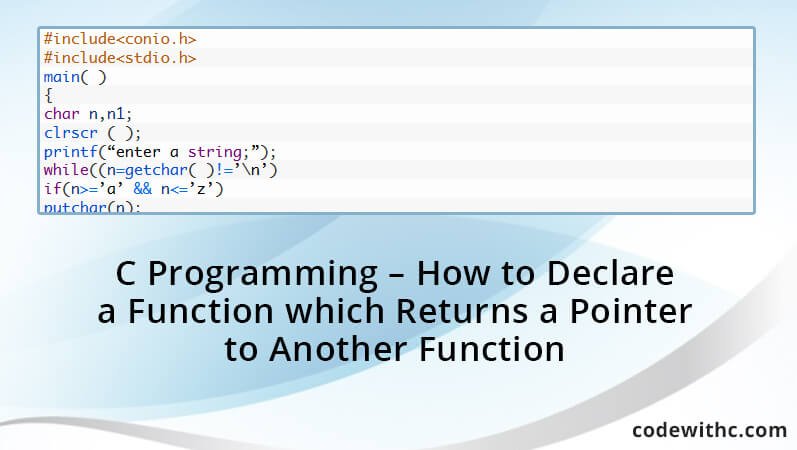Do you have full command of c programming language? You can agree with me that there are some things which are difficult to accomplish in c. there are things like declaring a function which returns a pointer to another function which sometimes challenges many people. Indeed do you know How to declare a function which returns a pointer to another function in c programming? I will teach you today on How to declare a function which returns a pointer to another function in c programming. Get to know this by reading through this article.
How to declare a function which returns a pointer to another function in c programming
Well, we assume that you know what it means by a pointer in C and also have the clear understanding of which software to use, I won’t go much onto that as I understand that you already know. So how do we create a pointer to an integer in C?
1. Create the pointer
First of all, to know how to get that done, you ought to have a clear understanding of what the pointer in c do and what they are. Do you know how to create the pointer in c this is pretty much simple to be achieved for example it is done like int*p;
2. Declare the pointer
Do you know how to declare the pointer? It is also simple for int k *(int) and will have declared the pointer k resume the return type int
3. Create the pointer to a function
What you have to do next after declaration is to create a pointer to a function for example
Int*k (int);
Here the priority feature takes into consideration, for say () takes priority before * Also you have how priority in c works
Final note
Was that difficult, remember if you get it difficult you have to do more practice and get to know writing codes using c language.
char f() {
return ‘f’;
}
char g() {
return ‘g’;
}
typedef char (*functionptr)();
functionptr f( char c ) {
if ( c == ‘f’ ) {
return f;
}
else if (c == ‘g’) {
return g;
}
else {
return null;
}
}
